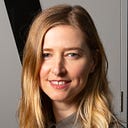Flume
A Sulfur Punk story
The following is a speculative ethnography, drawn from observation of Regen Network’s Wilbur Hot Springs pilot sprint, 29 April — 4 May, 2024.
“Not a bear,” declared the technician, peering sceptically at the photo displayed before him. “Could be man-bear-pig” he chuckled. The image, cheerfully labelled “bear!” with a jaunty exclamation and a smiley face, featured a figure — small and hunched over, bundled up in a black hoodie, face obscured. The Steward, steadfastly serious and busy at her console, pinpointed the image’s origin near Flume’s outer perimeter where it bordered the private lands. Somehow the animal gate sensors, usually vigilant, had missed this probable human trespass. Her fingers began tapping out a silent rhythm of warning to the other Steward Council members.
Over almost an entire epoch, which was 4 months, small imbalances had been flickering through the system. Either these were faults in monitoring or something deliberate, possibly an extraction event. Overuse or theft of a resource was unknown here at the planet’s oldest autonomous ecological zone, which had successfully defended itself for almost a century. With a ceremonial week looming, the Stewards requested a technician. A balance for skills was initiated through PAM’s external interface — an exchange that could be fulfilled at any future time across ecological zones (with shared affinity) for a similar or different need. Accommodation and food would be provided under the code of hospitality.
‘I’ve entered a time capsule’ the technician had thought when he arrived three days ago. Old cane chairs and heavy tables were spaced around the enclosed veranda of the lobby. On them, small vases of flowers wilted in the sun. The eggy scent of the Fluminariam was masked by sweeter fragrances wafting from the reception. People wandered by in robes and loose clothing, hair in various states of dry.
The receptionist looked up warily, anticipating his introduction.
“I am here for the code upgrade”, he confirmed for her.
“It’s the wick-trimmer”, she called to a colleague before pushing a paper map towards him, her finger resting on a marked rectangle. “You’re in Solar 8, follow this path. And”, her gaze fixed him with a firm directness, “keep your gadgets out of sight. People come here to disconnect”.
Flume’s founding lore was accessible to any who queried the ceremonial interface — a geyser that had developed the power of speech. Other knowledge resided there too, including essential translations of beaver, jackrabbit and other animal communications (the squirrels, it turned out, were not a very serious species).
The technician decided to skip the geyser and go straight to the graph of knowledge objects that were PAM’s context. The policy on gadgets, he discovered, was one of many that predated the development of the autonomous ecological zone. Flume was first purchased by the original Stewardship Council — referred to in the old parlance as “founders” — more than half a century ago from someone known as a “psychotherapist”, which he took to mean mind healer. Those who had been using the pools prior to the change of ownership expressed their strong opinion that nothing should change. For instance, kerosene lamps, requiring a fulltime wick-trimmer, had only been replaced by electric lighting in 2006 (“And why systems workers are today referred to as wick-trimmers”, noted the technician). The Founders, hearing the community’s preference, committed to only undertake necessary maintenance and upgrades — at least to the cosmetic surface of the human habitations. Outdated wall sockets were left in place, further discouraging use of devices.
Behind the scenes it was a different story. The Founders, scientists themselves, wove a detailed mesh of sensors, inputs and algorithms that could read the land from within and above. Visitors and guests to the hot springs contributed to Flume’s planning, actions and monitoring, but they did so in analogue forms. Planning occurred through ceremonies. Actions would often involve ritual, song and poetry alongside weeding and burning. Monitoring took the form of hand-written logs and offline photos that would later be captured into the PAM by staff.
Very few visitors were even aware that the value produced via the PAM was the first living value to become machine readable. It had been made into a planetary-wide living capital by an entity first referred to as the Living Capital Fund and later the World Envelopment Bank, using the tools of old capitalism to cause its own demise. These included automated contracts to buy options and never short nature. Details, such as where the first dollars came from, were opaque.
The technician knew some of this, having travelled from his home autonomous ecological zone, which was also supported through the World Envelopment Bank in its early days. His home’s ecology had recovered from desertification, aided by various innovations, which had been resourced through option sales on biocredits. Other zones, led by Indigenous land managers, nurtured and harvested plants now crucial for human and animal nutrition, elevated through their ability to trace their intellectual property through the shared components of PAM known as the Institutional Interface.
As the living-economy had grown, places that remained in the old capitalist economy had faltered. The private property neighbouring Flume was one such place, now a haven for illicit markets, gangs and violence. Unable to balance resources directly, they relied on the dollar, existing in a state of constant information deficit in which humans were the only endpoint in the flow of capital. Their newly identified covert visitor, the Bear-man, was of that place.
Thanks to Regen Network and Wilbur Hot Springs for ideas, inspiration and soaking time.
I am a Professor at RMIT University in Melbourne, working across the RMIT Blockchain Innovation Hub and the Digital Ethnography Research Centre. I am also an Associate Investigator (AI 🤖) of the ARC Centre of Excellence for Automated Decision-Making and Society and a Research Director in Metagov. I acknowledge the support of the Australian Research Council, FT19010372. I use this Medium blog for work-in-progress ideas and reflections.
